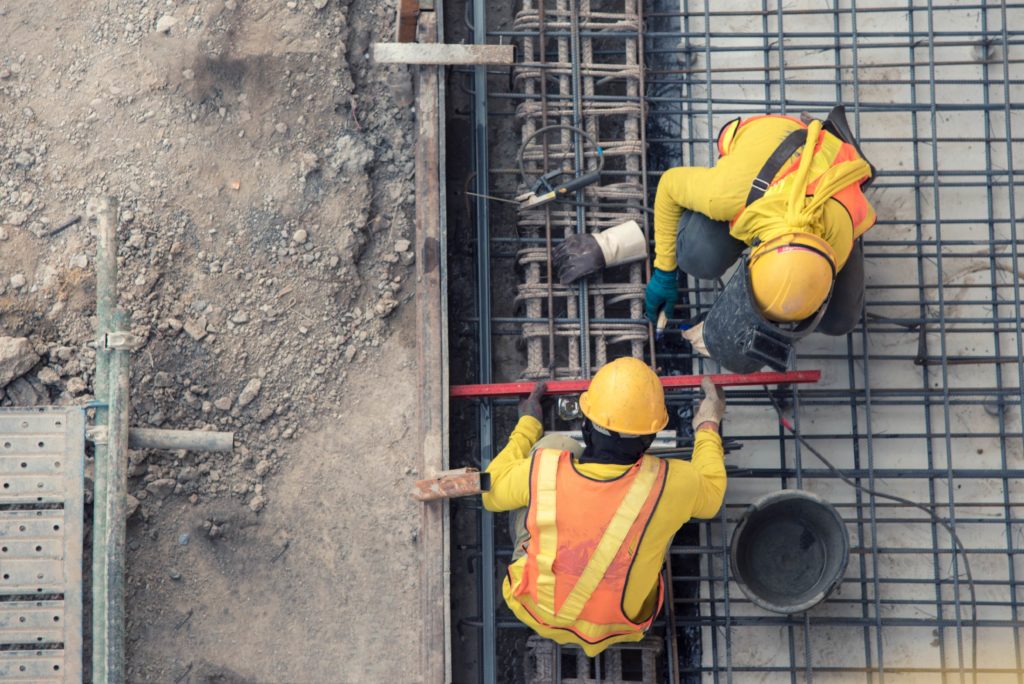Sector - Software & Technology
Building Blocks For A Construction Rebound

The construction sector represents 6% of UK GDP, employing more than 2.4 million people. So, it’s promising that the industry is better placed to rebound from Covid-19 than most.
Construction sites have been allowed to remain open since the introduction of the second national lockdown. The extension of the Help to Buy scheme and the Stamp Duty Holiday are also helping the sector get back on its feet. This is all fuelling cautious optimism, with 67% of industry leaders believing the sector is well-placed to stabilise and recover, according to our research.
Another reason for positivity is the pandemic has accelerated digital transformation in the sector. Every aspect of running a construction business – from employee ways of working to managing relationships with suppliers – has been revolutionised.
The sector has gone from being one of the least digitised, according to McKinsey in 2017, to one which embraces technology and where 55% of decision-makers are actively exploring IoT and analytics technologies to drive better business outcomes.
How can construction leaders build on this progress and ensure that further coronavirus restrictions don’t derail this digital transformation? How can they take their use of technology to the next level and rebound successfully?
Taking the load off
While the construction sector hasn’t been impacted as significantly as other sectors, it has still faced challenges. These have included supply chain delays, increased health and safety measures to protect employees and the temporary suspension of some projects. At the same time, the sector must contend with wider economic uncertainty.
During the first lockdown, when most sites were forced to close, the sites that remained open due to key worker status suffered from supply chain and labour challenges. This led to a steep decline in revenues.
The return of national lockdown measures, while less severe than the first, brings further disruption. But the good news is the sector has adapted. It is now much better positioned to stabilise and rebound.
This is because construction leaders have invested in digital technology and now recognise its importance. 70% see remote working tools as a priority, compared with just 30% before the pandemic, according to our study. 20% are now developing an overall digital transformation strategy as a result of Covid-19.
The sector has also invested in cloud technology, meaning organisations are more flexible and agile, and better able to respond to sudden new restrictions. From boosting collaboration and efficiency to adding new levels of flexibility, the cloud has allowed on-site project managers and staff operating remotely to interact seamlessly.
There are also signs the industry is embracing innovation. Some organisations are adopting immersive technologies to support virtual tours of sites, helping reduce on-site footfall, and keeping staff safe and projects moving.
These immersive technologies aren’t just helping to facilitate virtual tours to keep staff safe. Smart helmets and rugged wearables are also providing workers with instant on-site feedback, helping them benefit from safety features such as health trackers and emergency alerts sent instantly to their field of vision.
McKinsey has also found that Covid accelerated digital transformation has improved planning and resource monitoring processes since the pandemic. By drawing on e-Sourcing and digital stock management systems, end-to-end software platforms are enabling construction companies to better control and integrate value into supply chains.
All this progress is exciting. But the question is how do construction businesses sustain this momentum in such an uncertain climate? Even with news of vaccines on the horizon, the fact remains that we’re in a second national lockdown, with a possibility of an extension in December.
The construction sector must continue stepping up investment in connectivity applications and services. These hold the key to supporting new innovations and driving technological progress, despite an uncertain climate.
Laying the right foundations
Networks need to give construction businesses the ability to flex and scale up quickly, adapt rapidly to new restrictions and grow securely. They must be easy to implement, since an organisation can’t afford to overhaul its networking technologies during unprecedented disruption.
These connectivity solutions do exist. Historically, awareness has been low, but there are signs that the industry is on the right path.
Our research found that eight in ten construction leaders want to improve the capacity of their networks. 50% of businesses now want to adopt SD-WAN technology – a solution that can provide greater scalability, flexibility and agility – in the near future.
However, our study also revealed that 40% of construction businesses feel that they need external help to design and manage their IT and networking needs. Fortunately, they need not go it alone.
Building key partnerships
Investing in strategic technology partnerships is critical to ensuring network upgrades have the right business impact. Doing so won’t just provide construction organisations with access to wider expertise. They’ll also maximise the value of their investments.
By choosing the right long-term technology partner, construction businesses will benefit from strategic consultancy on where exactly upgrades are needed, and how they should be implemented to minimise disruption.
This is critical when it comes to selecting and building upon existing cloud technologies because these ultimately underpin remote working collaboration and drive organisational success.
Having strong technology partners is vital to building on digital progress and ensuring that the construction sector can emerge from the coronavirus pandemic stronger than ever, powering a successful rebound.
Achieving the impossible
“Covid-19 has positively forced us to do what we always thought was impossible”.
This was what one of our construction customers told us about the pace of digital transformation since March.
Now the challenge is sustaining this momentum. Adapting to new lockdown restrictions, sustaining mass remote working and continuing to reinvent routine processes.
We think construction leaders are right to be optimistic about the future. As long as they continue investing in digital technology – and specifically advanced connectivity solutions – the sector can stabilise, rebound and thrive in the future.
Mike Smith is Managing Director (Direct) at Virgin Media Business
If you would like to read more like this, then please click here
Related Articles
More Software & Technology Features
- Small Builders, big wins: Practical Artificial Intelligence that speeds up UK Construction Operations
12 Sep 25
Practical advice where artificial intelligence can return time and protect margin for smaller UK contractors.
- Alternative building practices are crucial to unlocking AI infrastructure benefits
7 Mar 25
With AI capabilities developing at an unprecedented pace, the government has announced its AI Opportunities Action Plan.
- Reflections and predictions: Leading professionals discuss the year ahead for 2025
3 Feb 25
Leading industry experts give their perspectives on the key trends poised to define 2025.






